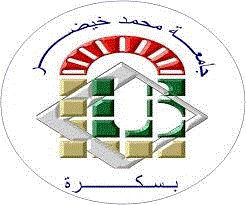| Titre : | La restitution numérique de la forteresse byzantine de Thamugadi. |
| Auteurs : | Ala Eddine Belouaar, Auteur ; Yacine Hadji Rabah, Directeur de thèse |
| Support: | Mémoire magistere |
| Editeur : | Biskra [Algerie] : Université Mohamed Khider, 2018 |
| Langues: | Français |
| Mots-clés: | Restitution ; La numérisation ; Patrimoine archéologique ; Forteresse byzantine de Thumugadi ; Photogrammetrie ; Architecure militaire byzantine. Restitution ; Digitization ; Archaeological heritage ; Byzantine fortress of Thumugadiphotogrammetry ; Byzantine military architecure. |
| Résumé : |
L’Algérie possède un immense patrimoine archéologique d’une portée universelle notamment le patrimoine archéologique légué par l’époque de la présence byzantine qui se caractérise par la multiplicité des édifices de défense dont lesquelles nous allons pencher en prenant comme cas d’étude la forteresse byzantine de Thumughadi. Aujourd’hui, les aléas se multiplient, les monuments archéologiques sont menacés de disparaitre sous l’action destructrice de la nature, temps et surtout de l’homme. Ce patrimoine est une réalité complexe d’autant plus fragile, menacée et en train de dépérir sous les yeux des acteurs impliqués et aussi le grand public. Alors, sa conservation représente un enjeu tant sur le plan national qu’international. En effet la conservation par le biais de la numérisation et la restitution virtuel est devenue pratique et abordable car les dernières années ont vu de nombreux développements dans le monde de la modélisation 3D du patrimoine architectural et archéologique. L'un de ces développements est l'évolution des programmes de modélisation en 3D par photogrammétrie. Ayant l’objectif, à documenter et présenter les données archéologique de la forteresse byzantine de Thumughadi en 3D. On a lancé ce travail qui consiste en premier lieu à construire une connaissance théorique sur les concepts de restitution, la numérisation et également, à comprendre l’ordre et l’état de fait de la numérisation en 3d ainsi, de comprendre la logique général d’édification militaire byzantine en Algérie puis, on a procédé à produire un protocole adéquat pour la numérisation et enfin la modélisation en 3D la forteresse byzantine Thumughadi. L’objectif lointain et principal était l’acquisition d’une réflexion générale de la sauvegarde du patrimoine archéologique et faciliter l'interprétation des vestiges par l’exemple de la forteresse byzantine ou simplement soutenir l'aspiration à documenter le patrimoine archéologique aussi exhaustivement que possible. Les résultats de cette recherche ont été concluants. On a suit le protocole établis pour l’acquisition de données, traitement et création des modelés 3D. Algeria possesses an immense archaeological heritage of universal significance, notably the archaeological heritage bequeathed by the Byzantine presence, which is characterized by the multiplicity of defense buildings, which we will lean by taking as a case study the fortress Byzantine of Thumughadi. Today, the vagaries are multiplying, the archaeological monuments are threatened to disappear under the destructive action of nature, time and especially man. This heritage is a complex reality that is all the more fragile, threatened and disappearing under the eyes of the actors involved and the public. Then its conservation is an issue both nationally and internationally. Indeed the retention by the ticket of digitization and the virtual rendering has become practical and affordable because the last years have seen many developments in the world of 3D modeling of architectural and archaeological heritage. One of these developments is the evolution of 3D modeling programs using photogrammetry. Having the objective, to document and present the archaeological data of the Byzantine fortress of Thumughadi in 3D. We initiated this work which consists first in constructing a theoretical knowledge on the concepts of restitution, digitization. In addition, to understand the order and the state of fact of the digitization in 3D thus, to understand the general logic of Byzantine military edification in Algeria then, a suitable protocol for the digitization and finally the 3D modeling of the Byzantine fortress Thumughadi was produced. The distant and principal objective was to acquire a general reflection on the preservation of the archaeological heritage and to facilitate the interpretation of the vestiges by the example of the Byzantine fortress or simply to support the aspiration to document the archaeological heritage as exhaustively as possible. The results of this research were conclusive. We followed the established protocol for data acquisition, processing and creation of 3D modeling. |
Exemplaires (1)
| Cote | Support | Localisation | Disponibilité | Emplacement |
|---|---|---|---|---|
| TH/2262 | Mémoire magistere | Bibliothèque centrale El Allia | Exclu du prêt | Salle de consultation |
Consulter en ligne (1)
Consulter en ligne URL |



